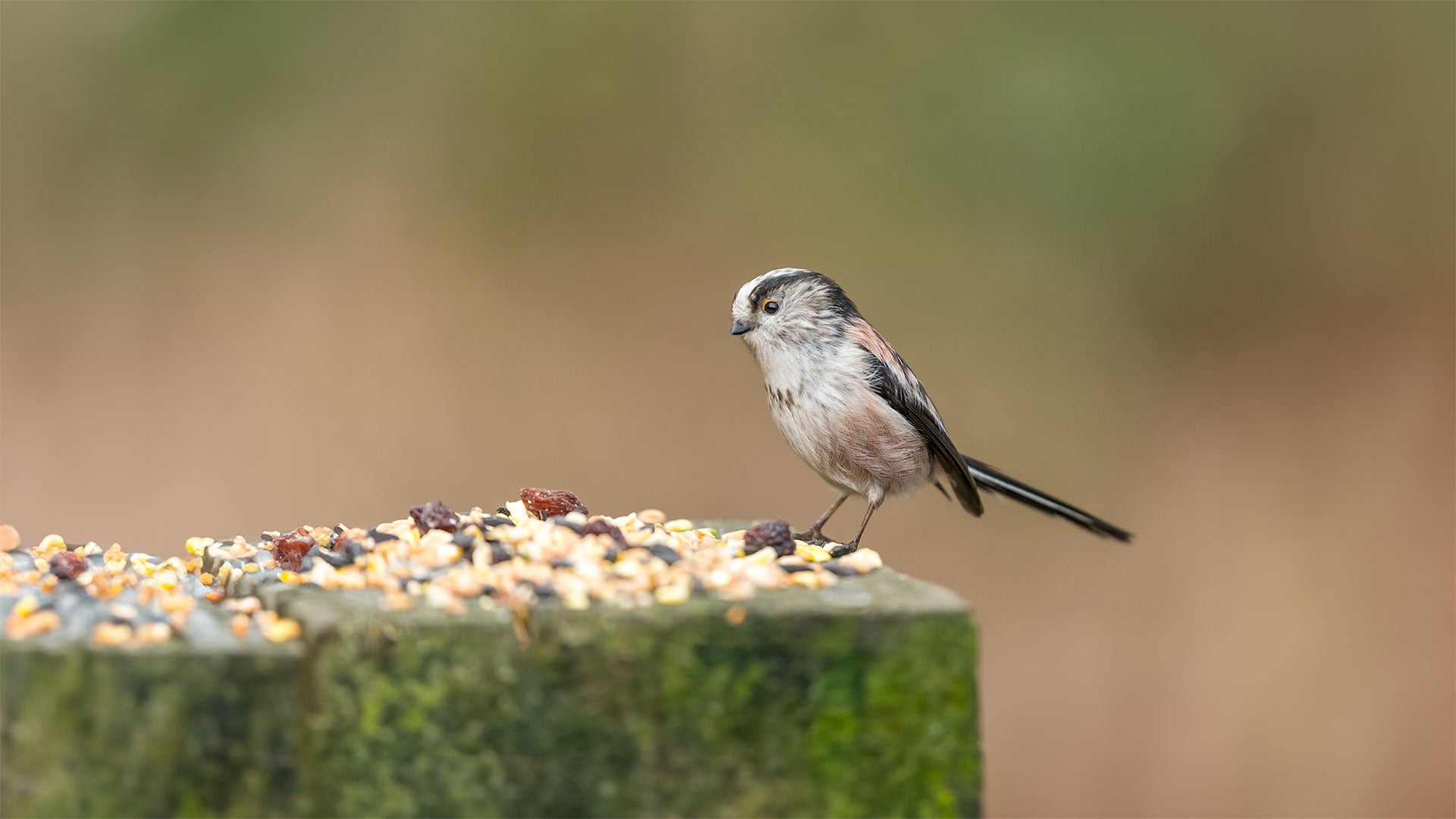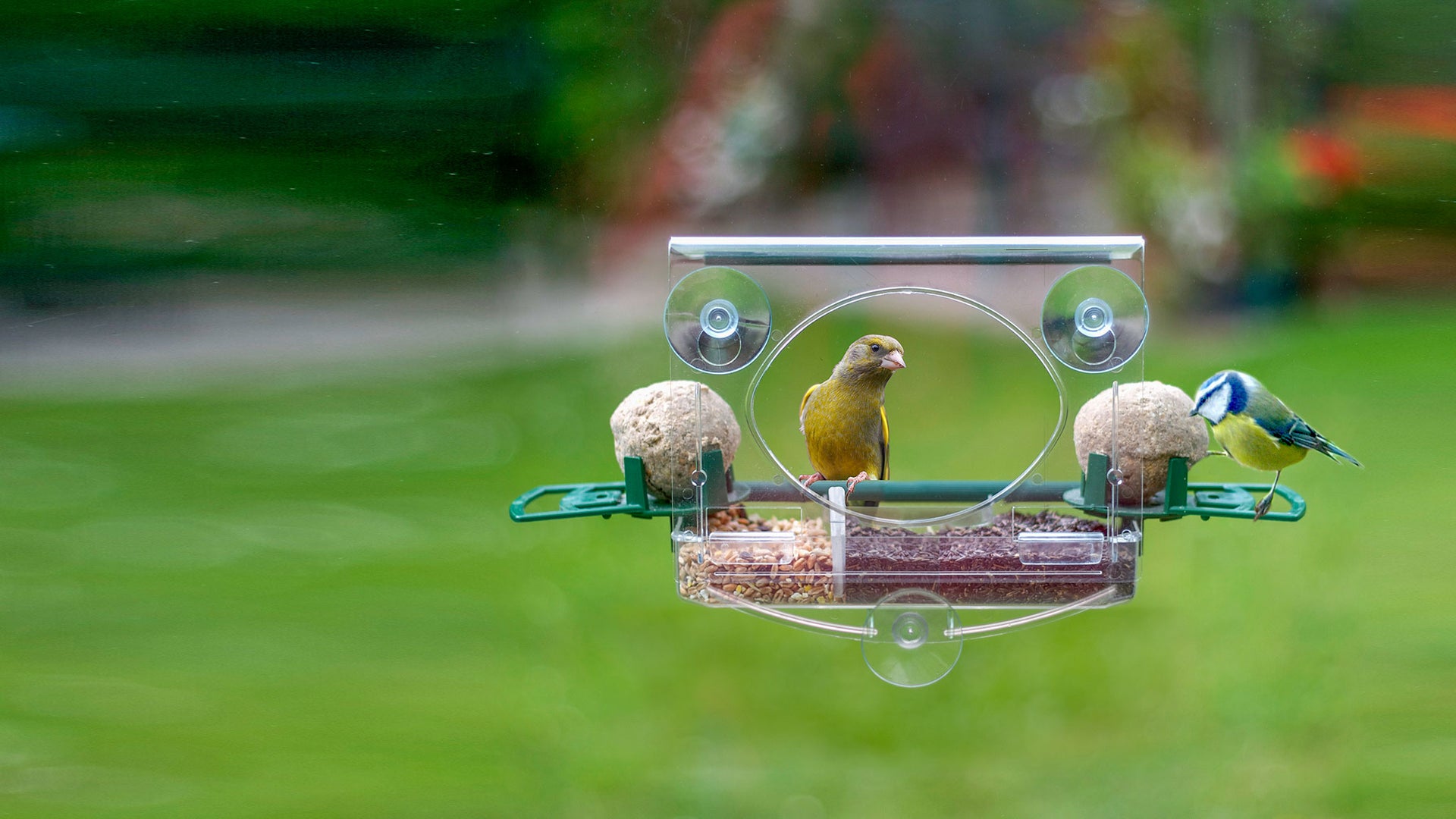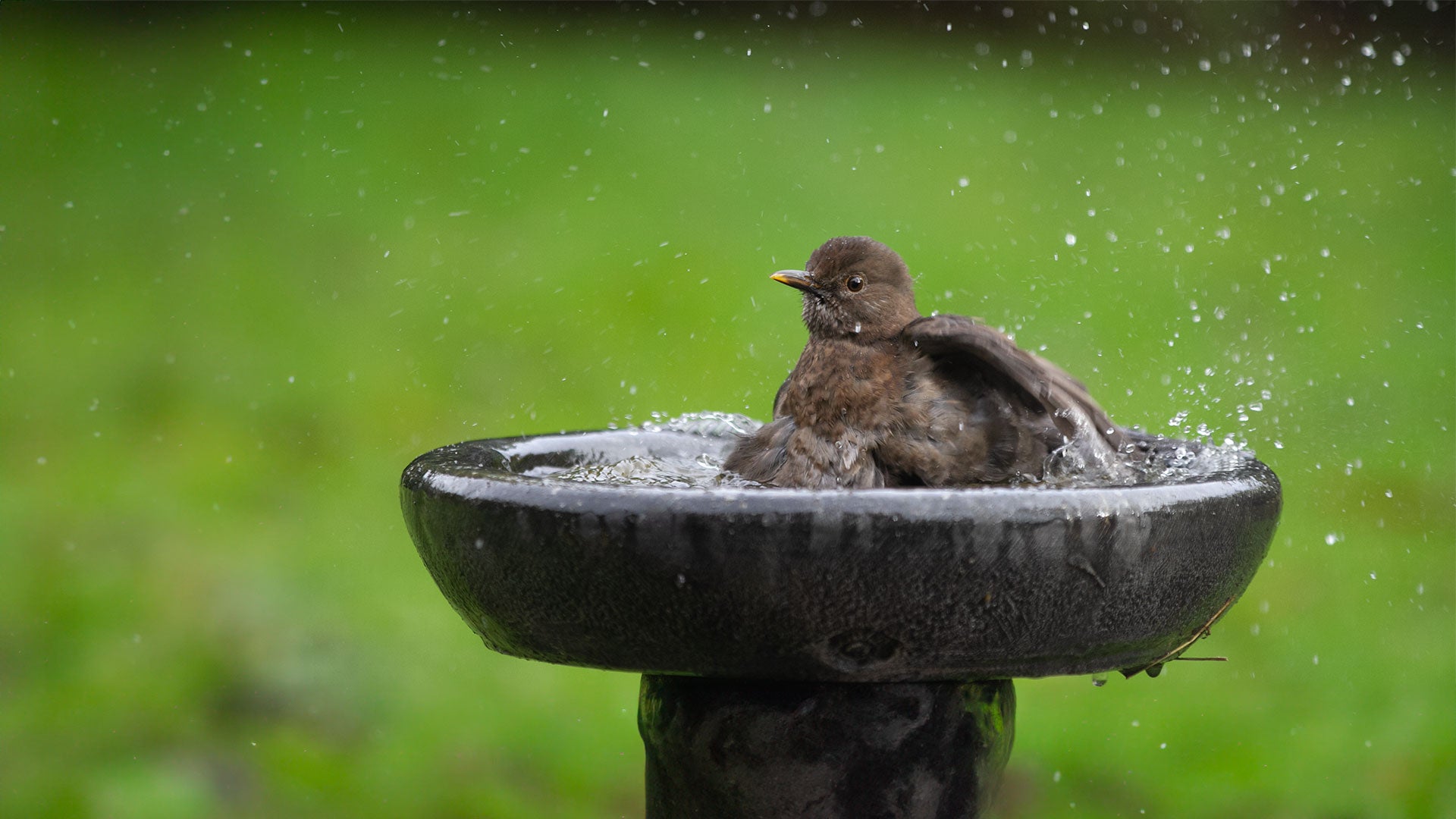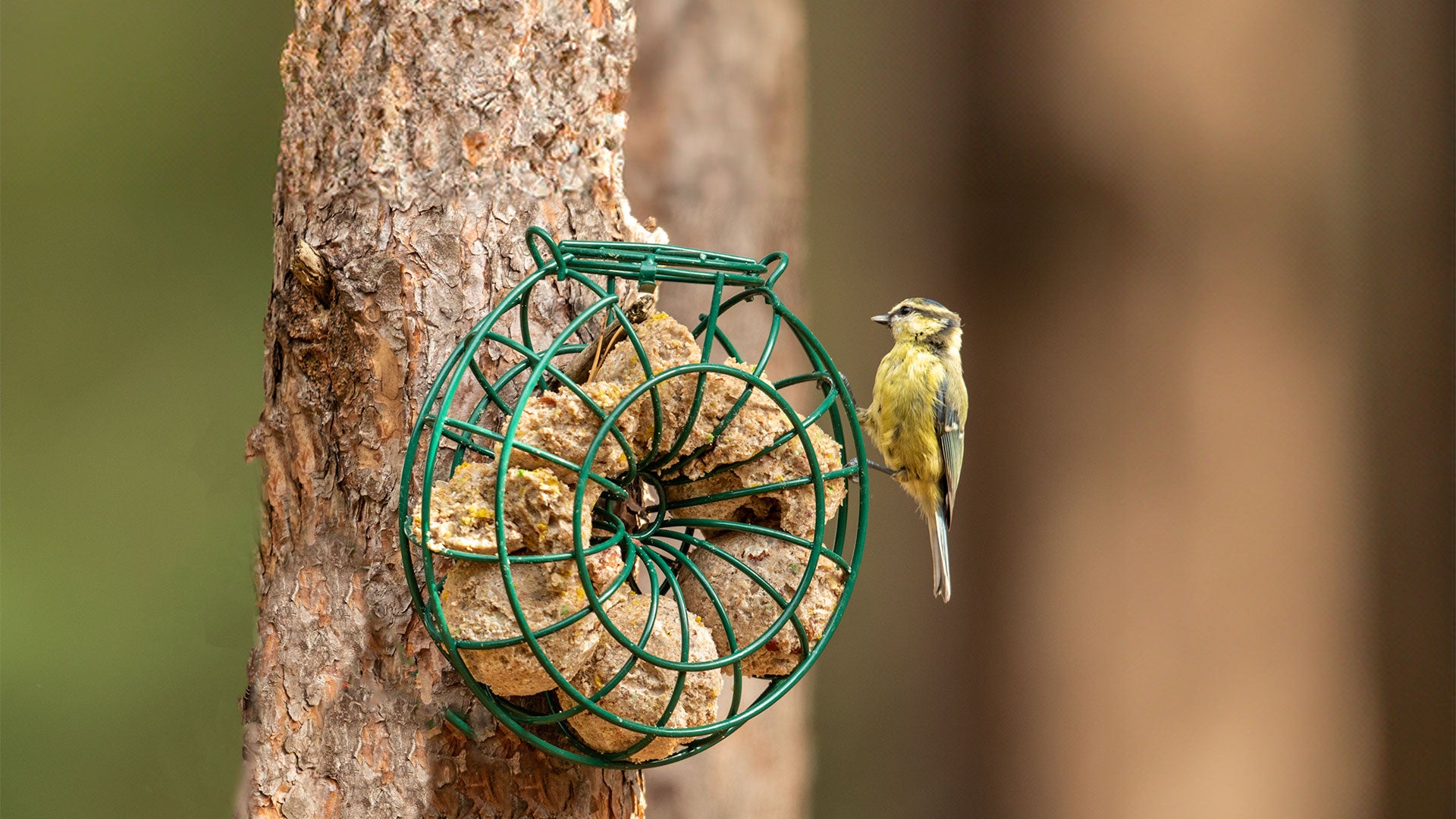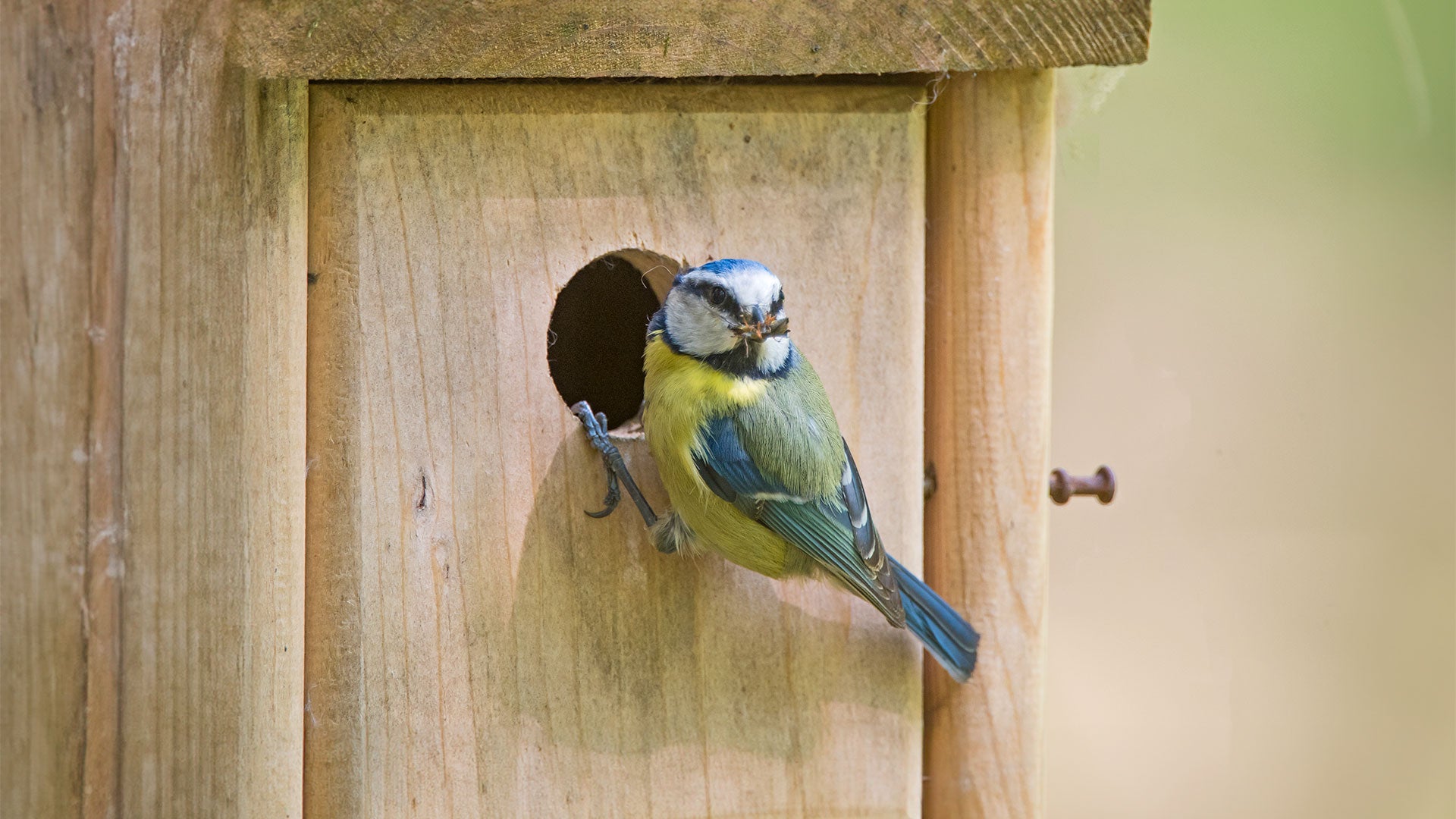Blue tits are one of our most common garden visitors. Happy to feed from seed feeders and breed in artificial nest boxes placed in gardens. The BTO bird survey shows they visit the majority of British gardens.
What does a blue tit look like?
Length: 12 cm
Easily identified as it is the only tit with blue wing, tail and crown. The chest is yellow and the blue tit has white cheeks. A black line runs through the eye, round the nape and cheeks. A white border surrounds the blue crown, while the back is a greenish colour, with yellow colouration on the rump. The bill is black with a brownish tip, legs are a deep slate blue.
The female has a slightly less vivid colouration.
Young blue tits have have more greenish-brown upper parts and yellowish cheeks.

Blue tit call and song - What does a blue tit sound like?
Most typical of the many calls is a scolding ‘tsee-tsee-tseet’. Song is a cheery ‘tsu-tsuhu-hu’.
When and where do blue tits nest?
Breeding starts from mid-April. They nest in holes or cavities, usually in a tree or wall, but also in banks and nest boxes. A nest is a cup of moss, leaves, hair and grass which is lined with down, feathers and hair. The female builds the nest and lay seven to twelve (sometimes five to sixteen) eggs. They are a smooth glossy white with a variable amount of purple-red or reddish-brown speckles. The female alone will incubate the eggs for twelve to sixteen days. Both tend the young who remain in the nest for fifteen to twenty-three days.
Blue tit nesting habits
Blue tits nest in holes in trees, and you might also find them in a nest box in your garden. They nest between March and June, laying between five and twelve eggs which are white with red flecks. These hatch after two weeks of incubation, the young fledge after 18 days and are fully independent within four weeks. Blue tits may have one or two broods per year but this depends on the availability of food around their habitat.
Blue tit habitat
Blue tits can be found right across the UK, apart from some Scottish islands, throughout the year. Common blue tit habitats include woodlands, hedgerows, parks and gardens.
They particularly like areas with scattered trees, but will also happily set up home on farms and wetlands, where they can find plentiful food. A preference for such conditions explains why Eurasian blue tits limit themselves to Europe and western Asia.
If you want to attract them to your garden, make or buy a nest box with a hole around 28mm wide. Then position it 2-4 metres up a wall or tree, out of the reach of cats, with clear space in front of the entrance. It’s also best to ensure the box sits in a shady area, or faces north-east, to avoid strong sunlight. And tilt the box forward a little, so driving rain will come down on the roof, rather than flood the nest inside.
What do blue tits eat in the wild?
Blue tits mainly eat insects, caterpillars, nuts, seeds and fruits. These birds will also be grateful for extra food provided in our gardens.
What to feed blue tits in the garden?
Where should you feed blue tits?
Feeder – Ideally above 1m in height
Table – Open topped or covered
Ground – Not Suitable
How long do blue tits live?
Around two thirds of young blue tits don’t make it through the first year of their life. But those who do survive tend to live for around three years. The current known record for this species is 10 years!
Where do blue tits go in winter?
Most blue tits don’t migrate and will instead stay close to where they hatched, even in the harshest of winters.
In the colder months, these birds will seek shelter in trees and bushes and will huddle together to keep themselves warm. Some blue tits will also use nest boxes as a way to keep out of the cold.
Where do blue tits sleep?
Blue tits usually sleep outside in bushes, trees or hedgerows, ensuring that they are protected from any lurking predators.
How to attract blue tits to your garden
As with most birds, food is a great way to attract this species into your garden. Blue tits particularly love to feed on mixed seeds, mealworms and peanuts from hanging bird feeders.
Planting flowers and bushes can also encourage this species into your garden. Bushes with bright berries attract insects which will then attract blue tits. Elder and Hawthorn trees tend to be favoured, with blue tits feeding on the berries in the autumn months.


